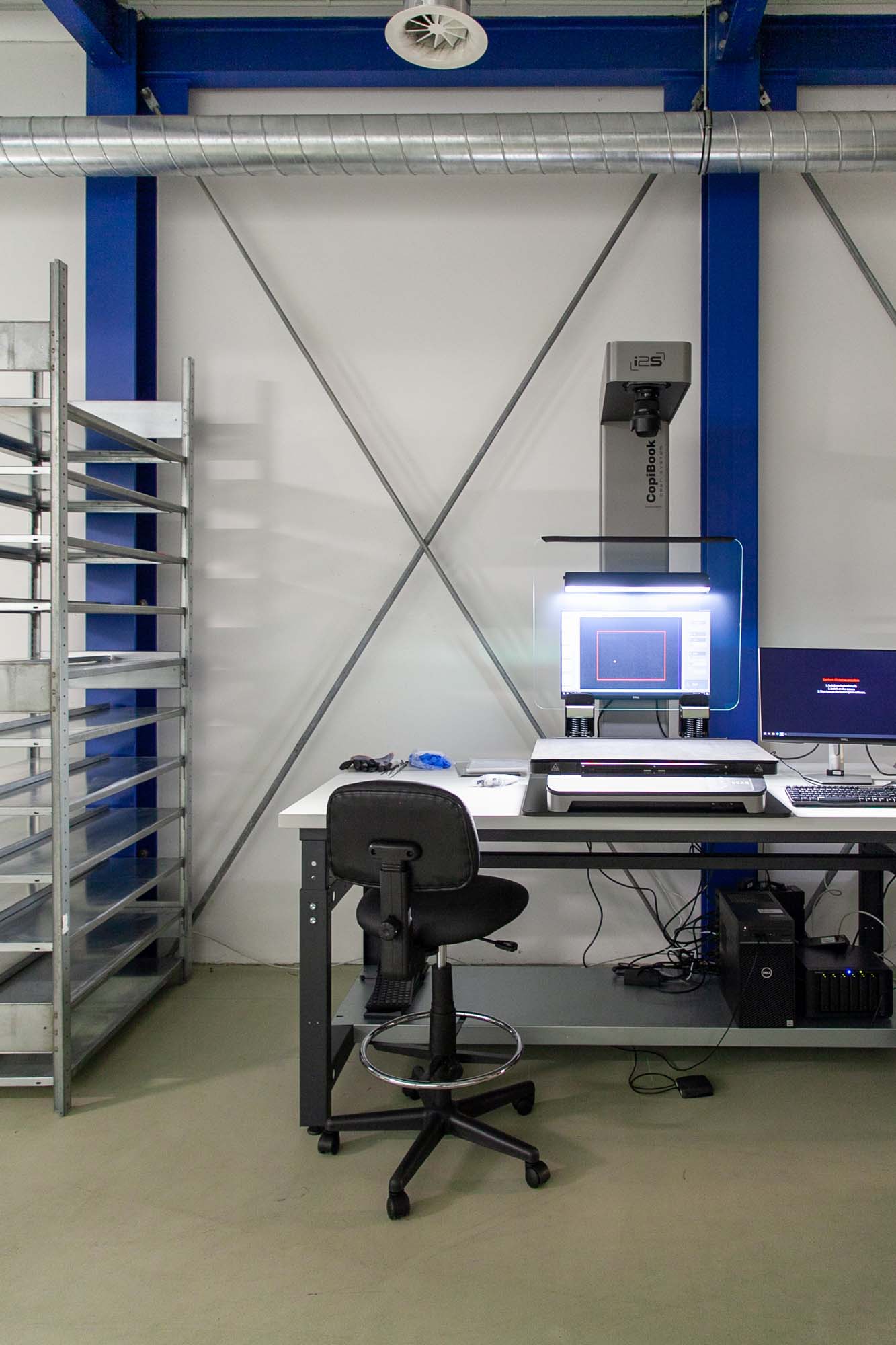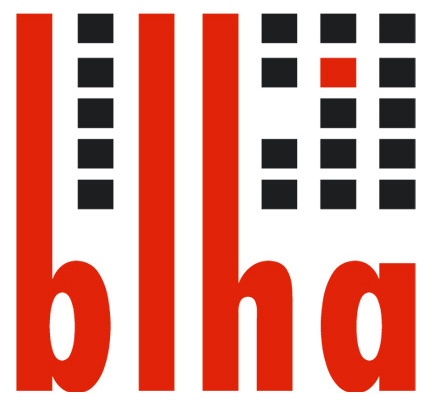Scanning and editing - digitisation
In order to make the files of the fonds Rep. 36A Oberfinanzpräsident Berlin-Brandenburg (II) available for current research methods and accessible to the public, it is necessary to scan or digitise them in a way that preserves the original as much as possible. To ensure that the more than two million pages of the collection can be digitised within the specified project duration, the project is working with a specialist service provider. The smoothest possible digitisation process is achieved through intensive preparation and cooperation with the archivists managing the collection and the restoration department, as well as targeted project planning. The quality of the recordings is guaranteed by, among other things, compliance with ISO 19264-1, a standard that also applies to internal digitisation work at the State Main Archive.
Gentle digitisation of originals using archive scanners

Only overhead scanners are used for the digitisation of archive material. These consist of a uniformly illuminated support table for the archive material, which is equipped with a tilting glass plate that can be used to additionally fix documents in place. The camera module is mounted on a tripod above the table and uses a special sensor and a high-quality lens to take high-resolution, distortion-free images.
The digitisation staff, who are trained and experienced in the conservation handling of archive material, create images of each individual file page and then export these as master files in the loss-free TIFF format and as working copies in the compressed JPEG format. If required, further formats or resolutions can be output from these formats, e.g. for web presentation or print reproductions.
Quality assurance and utilisation
Once the files have been handed over to the project, they are checked for completeness, integrity and compliance with the agreed digitisation requirements as part of quality assurance. After a successful check, the digitised files are uploaded to the internal working environment and converted as far as possible into computer-readable information using OCR (Optical Character Recognition), i.e. made searchable. The different fonts (Antiqua and Fraktur fonts) and the different print images resulting from the various reproduction methods, paper types and ageing conditions pose difficulties for OCR. The checked and processed digital copies will be analysed by the provenance research department using a DMS to be developed for this purpose at the State Main Archive and made publicly accessible as comprehensively as possible via the archive database of the State Main Archive.
In order to make the files of the fonds Rep. 36A Oberfinanzpräsident Berlin-Brandenburg (II) available for current research methods and accessible to the public, it is necessary to scan or digitise them in a way that preserves the original as much as possible. To ensure that the more than two million pages of the collection can be digitised within the specified project duration, the project is working with a specialist service provider. The smoothest possible digitisation process is achieved through intensive preparation and cooperation with the archivists managing the collection and the restoration department, as well as targeted project planning. The quality of the recordings is guaranteed by, among other things, compliance with ISO 19264-1, a standard that also applies to internal digitisation work at the State Main Archive.
Gentle digitisation of originals using archive scanners

Only overhead scanners are used for the digitisation of archive material. These consist of a uniformly illuminated support table for the archive material, which is equipped with a tilting glass plate that can be used to additionally fix documents in place. The camera module is mounted on a tripod above the table and uses a special sensor and a high-quality lens to take high-resolution, distortion-free images.
The digitisation staff, who are trained and experienced in the conservation handling of archive material, create images of each individual file page and then export these as master files in the loss-free TIFF format and as working copies in the compressed JPEG format. If required, further formats or resolutions can be output from these formats, e.g. for web presentation or print reproductions.
Quality assurance and utilisation
Once the files have been handed over to the project, they are checked for completeness, integrity and compliance with the agreed digitisation requirements as part of quality assurance. After a successful check, the digitised files are uploaded to the internal working environment and converted as far as possible into computer-readable information using OCR (Optical Character Recognition), i.e. made searchable. The different fonts (Antiqua and Fraktur fonts) and the different print images resulting from the various reproduction methods, paper types and ageing conditions pose difficulties for OCR. The checked and processed digital copies will be analysed by the provenance research department using a DMS to be developed for this purpose at the State Main Archive and made publicly accessible as comprehensively as possible via the archive database of the State Main Archive.

